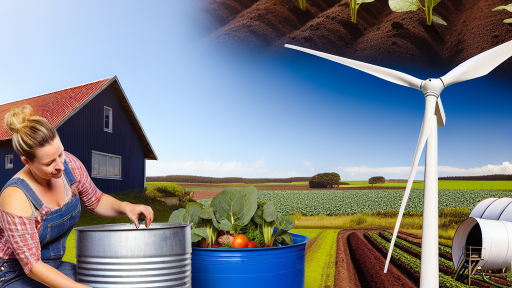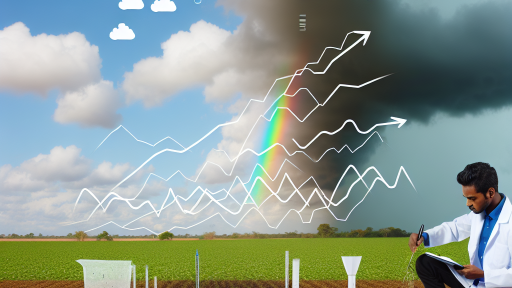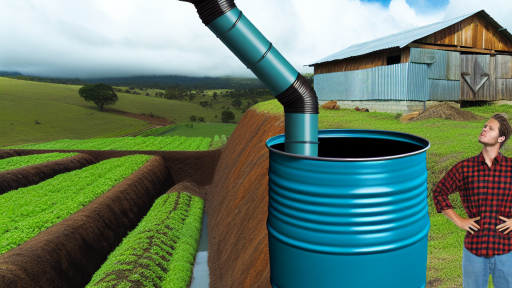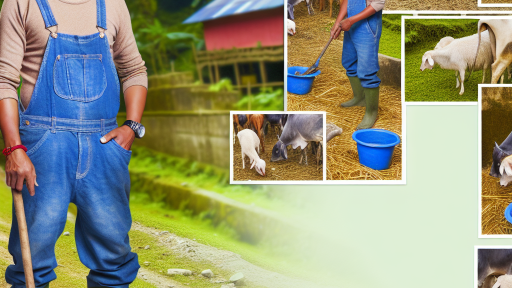Introduction to Drought-Resistant Crops
Drought-resistant crops play a crucial role in sustainable farming.
These crops are designed to survive in arid conditions.
They require less water compared to traditional crops.
This characteristic is vital as water scarcity grows globally.
Importance of Drought-Resistant Crops
Drought-resistant crops significantly enhance food security.
They help farmers maintain production during dry spells.
Moreover, they reduce reliance on irrigation systems.
This reduction conserves water resources for other uses.
Benefits of Sustainable Farming
Utilizing drought-resistant crops promotes sustainable agricultural practices.
Sustainable farming methods protect soil health and biodiversity.
Consequently, these practices ensure long-term ecological balance.
Farmers benefit from increased resilience to climate change.
Development of Drought-Resistant Varieties
Researchers focus on breeding and biotechnology to enhance these crops.
They work on improving traits such as water-use efficiency.
Additionally, they aim to increase resistance to pests and diseases.
Transform Your Agribusiness
Unlock your farm's potential with expert advice tailored to your needs. Get actionable steps that drive real results.
Get StartedPublic and private sectors collaborate to advance these initiatives.
Overview of the Challenges Posed by Drought and Climate Change on Agriculture
Drought represents a significant challenge for global agriculture today.
Climate change exacerbates drought conditions in many regions.
Farmers face increasing pressures to adapt their practices.
Crop yields suffer dramatically under prolonged drought conditions.
This often results in lower food production and higher prices.
Moreover, drought disrupts the water supply crucial for irrigation.
Water scarcity leads to fierce competition among agricultural sectors.
Drought also affects soil quality and fertility over time.
Dry conditions increase the risk of pest and disease outbreaks.
Farmers are forced to manage these challenges amidst growing population demands.
Climate change introduces unpredictable weather patterns.
This unpredictability complicates planning for planting and harvesting.
Furthermore, changes in temperature impact crop growth cycles.
Farmers need effective strategies to cope with these shifts.
Investing in drought-resistant crops can provide viable solutions.
Research into crop genetics is expanding rapidly.
These advancements aim to produce varieties with better drought tolerance.
Adopting sustainable practices is essential for long-term viability.
Collaboration among scientists, farmers, and policymakers is crucial.
Through innovation and adaptation, agriculture can face these challenges.
Criteria for Selecting Drought-Resistant Crops
Key Characteristics
Drought-resistant crops exhibit specific traits that allow them to thrive in arid conditions.
These plants typically have deep root systems.
This feature helps them access moisture deeper in the soil.
Showcase Your Farming Business
Publish your professional farming services profile on our blog for a one-time fee of $200 and reach a dedicated audience of farmers and agribusiness owners.
Publish Your ProfileAdditionally, they possess leaves that minimize water loss.
Smaller or waxy leaves reduce transpiration effectively.
Another crucial trait includes outstanding water-use efficiency.
These crops can utilize available water more effectively than others.
Furthermore, they often show a remarkable ability to recover from stress.
Rapid regrowth after drought conditions is essential for survival.
Adaptation Mechanisms
Drought-resistant crops have evolved various mechanisms to survive dry spells.
Many can enter a dormant state during extreme droughts.
This allows them to conserve energy and resources.
Others show strong tolerance to soil salinity.
This enables them to thrive where water quality is poor.
Moreover, some can alter their growth patterns in response to water availability.
Adjusting flowering and fruiting times ensures reproductive success.
These adaptations highlight the importance of genetic diversity.
Diverse crops can respond to various environmental challenges effectively.
Regional Suitability
Selecting drought-resistant crops also depends on regional conditions.
Climate variants significantly impact crop performance.
Therefore, farmers must consider local weather patterns.
Soil types also play a critical role in determining crop viability.
Certain crops perform well in sandy soils, while others prefer clay.
Additionally, native species often adapt better to local conditions.
Incorporating regional flora can enhance sustainability.
This approach fosters biodiversity and ecological balance in farming systems.
Uncover the Details: Water Conservation Tips for Climate-Smart Farmers
Case Studies of Successful Drought-Resistant Crops
Introduction to Drought-Resistant Varieties
Drought-resistant crops are essential for sustainable agriculture today.
They help farmers cope with climate change and water scarcity.
Various case studies illustrate their impact on farming practices.
Case Study: Sorghum in Africa
Sorghum has emerged as a key drought-resistant crop in Africa.
Farmers have successfully cultivated it in arid regions.
Consequently, it provides food security and income stability.
Sorghum also requires less water compared to traditional crops.
This adaptability makes it a viable option for many farmers.
Impact on Local Communities
In communities like Mali, sorghum cultivation has witnessed remarkable growth.
This crop offers a reliable food source during dry seasons.
Additionally, it supports local economies by providing jobs.
Case Study: Pearl Millet in India
Pearl millet is another successful example of drought resistance.
In India, it thrives in dry, marginal lands.
This crop has a high nutritional value, making it essential for food security.
Farmers embrace pearl millet for its resilience and profitability.
Economic Benefits
The cultivation of pearl millet has boosted rural economies.
Showcase Your Farming Business
Publish your professional farming services profile on our blog for a one-time fee of $200 and reach a dedicated audience of farmers and agribusiness owners.
Publish Your ProfileIt enables farmers to diversify their income through sale and trade.
Moreover, it reduces dependency on water-intensive crops.
Case Study: Drought-Tolerant Maize in Mexico
In Mexico, scientists developed drought-tolerant maize varieties.
This initiative significantly increased yields in dry regions.
Farmers reported better crop performance even in challenging conditions.
Broader Impacts on Agriculture
Drought-tolerant maize contributes to improved food security in Mexico.
Furthermore, it aids in conserving water resources.
This has a positive ripple effect on local ecosystems.
Technological Advancements in Crop Development
New technologies enhance the development of drought-resistant crops.
Biotechnology and genetic engineering play a vital role.
These advancements continue to improve crop resilience.
Future Prospects
Investments in research are crucial for ongoing success.
Farmers will need innovative solutions to face climate change.
Drought-resistant crops hold the key for sustainable farming practices.
Discover More: Soil Management Practices to Decrease Emissions
Innovative Farming Techniques to Enhance the Effectiveness of Drought-Resistant Crops
Precision Agriculture
Precision agriculture optimizes field-level management.
It uses technology to monitor crop condition.
This technique enhances water usage efficiency significantly.
Farmers apply water only where necessary.
Consequently, they reduce waste and improve yields.
Additionally, data analytics helps farmers make informed decisions.
Soil Health Management
Healthy soil retains moisture better than degraded soil.
Using cover crops enhances soil structure and fertility.
These crops reduce erosion and improve organic matter.
Fertile soil also supports root development in drought-resistant varieties.
As a result, plants become more resilient to drought conditions.
Water Conservation Techniques
Implementing rainwater harvesting systems boosts water availability.
This method captures and stores rainfall for future use.
Drip irrigation is another effective technique.
It delivers water directly to the plant roots.
Consequently, it minimizes evaporation and runoff losses.
Crop Diversification
Diversifying crops reduces risk and maximizes resource use.
Planting drought-resistant varieties alongside conventional crops is beneficial.
This strategy improves overall farm resilience.
Moreover, it helps maintain soil nutrients and crop health.
Integrated Pest Management
Integrated Pest Management (IPM) minimizes chemical usage.
By focusing on prevention, it reduces stress on plants.
Healthy plants are more resistant to drought.
IPM encourages biodiversity, promoting natural pest control methods.
Education and Knowledge Sharing
Training farmers on innovative techniques strengthens sustainable practices.
Showcase Your Farming Business
Publish your professional farming services profile on our blog for a one-time fee of $200 and reach a dedicated audience of farmers and agribusiness owners.
Publish Your ProfileWorkshops and field days facilitate knowledge exchange.
Involving local agricultural organizations enhances outreach.
Community support fosters collaboration and innovation.
Find Out More: Optimizing Irrigation Practices for Carbon Sequestration
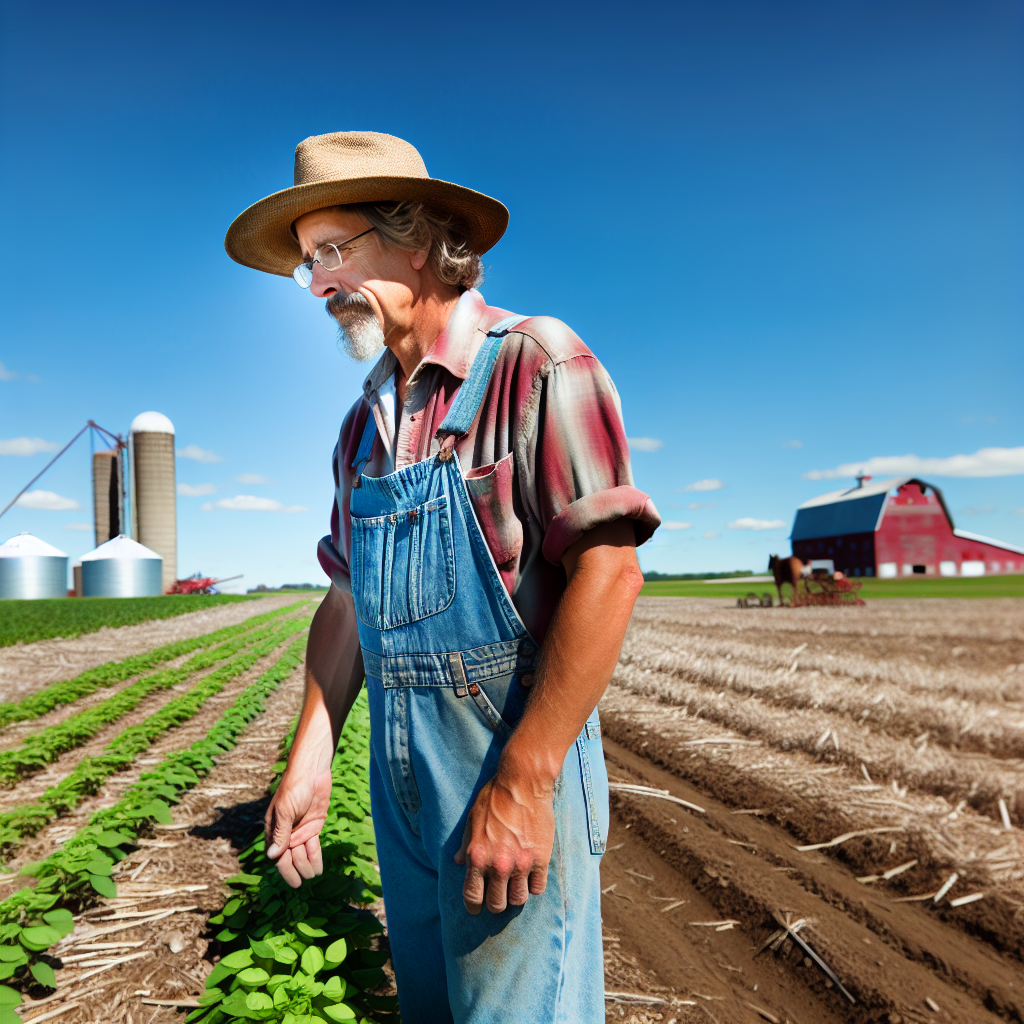
Impact of Drought-Resistant Crops on Soil Health and Biodiversity
Enhancing Soil Structure
Drought-resistant crops improve soil structure significantly.
This enhancement promotes water retention in the soil.
As a result, soil becomes more resilient to erosion.
Additionally, better soil structure fosters root growth.
Healthy roots increase organic matter in the soil.
Consequently, a rich organic layer supports various organisms.
Promoting Soil Fertility
Drought-resistant crops contribute to increased soil fertility.
They often require fewer chemical fertilizers.
This reduction decreases the risk of soil contamination.
Diverse root systems of these crops enhance nutrient cycling.
Ultimately, healthy soil leads to healthier crops.
Encouraging Biodiversity
Drought-resistant crops play a vital role in promoting biodiversity.
They provide habitats for numerous beneficial insects.
These insects assist in pollination and pest control.
Moreover, introducing diverse plant species enriches the ecosystem.
This diversity makes farming systems more resilient.
Supporting Microbial Activity
Healthy soil supports flourishing microbial communities.
Drought-resistant crops positively influence microbial diversity.
These microbes enhance nutrient availability in the soil.
Furthermore, they improve soil health through organic matter decomposition.
Such activity supports sustainable agricultural practices.
Adapting to Climate Change
The use of drought-resistant crops mitigates climate change effects.
They help secure food production amid unpredictable weather.
This adaptability strengthens the ecological balance of farms.
It ultimately leads to more sustainable farming systems.
Uncover the Details: Effective Climate Resilience Tactics for Farmers
Economic Benefits and Potential Market for Drought-Resistant Crops in Sustainable Agriculture
Introduction to Drought-Resistant Crops
Drought-resistant crops play a vital role in sustainable agriculture.
They reduce water usage, thus conserving vital resources.
These crops enable farmers to manage climate variability effectively.
Economic Advantages
The economic benefits of drought-resistant crops are substantial.
First, they lead to lower irrigation costs for farmers.
Second, they can increase yields during dry conditions.
This results in higher revenue for farmers who adopt them.
Moreover, reduced crop failure rates further enhance financial stability.
Market Demand
There is a growing demand for drought-resistant crops in global markets.
Consumers are increasingly aware of sustainable farming practices.
Showcase Your Farming Business
Publish your professional farming services profile on our blog for a one-time fee of $200 and reach a dedicated audience of farmers and agribusiness owners.
Publish Your ProfileConsequently, there is a shift towards purchasing environmentally-friendly products.
Potential for Export
Drought-resistant crops hold strong potential for export opportunities.
Countries facing water scarcity are prime targets for these crops.
Such exports could significantly boost local economies.
Investment Opportunities
The development of drought-resistant crops attracts various investors.
Agtech companies are innovating to enhance crop resilience.
Investment in research and development can yield high returns.
Challenges and Considerations
Despite the benefits, some challenges persist.
Initial investment costs may deter some farmers.
Additionally, education on the use of new technologies is essential.
Farmers need support to transition smoothly to these practices.
Future Prospects for Drought-Resistant Crops
The future of drought-resistant crops looks promising.
As climate change impacts agriculture, these crops become essential.
They offer a pathway to sustainable farming and economic resilience.
Future Trends in Biotechnology and Genetic Engineering for Developing Drought-Resistant Varieties
Advancements in Genetic Engineering Techniques
Recent advancements in genetic engineering have revolutionized the development of crops.
Techniques like CRISPR/Cas9 enable precise modifications in plant DNA.
This precision facilitates the identification of drought-resistance genes.
Consequently, scientists can introduce these traits into various crops.
Collaboration Between Researchers and Farmers
Collaboration is essential for successful crop development.
Researchers partner with farmers to understand real-world challenges.
This partnership ensures that new varieties meet practical needs.
Moreover, farmers can provide feedback on the performance of these varieties.
Integration of Data Analytics
Data analytics plays a crucial role in modern agriculture.
Predictive modeling helps identify environmental conditions that affect crops.
By analyzing data, researchers can make informed decisions about breeding.
Additionally, data collection facilitates the monitoring of crop performance over time.
Focus on Sustainability and Environmental Impact
Sustainable practices are at the forefront of agricultural research.
Developing drought-resistant crops reduces the need for irrigation.
This reduction conserves water resources and promotes ecosystem health.
Furthermore, sustainable crops can enhance soil quality and biodiversity.
Future Crop Varieties and Market Adoption
Anticipated advancements in crop varieties will improve market viability.
Drought-resistant varieties can enhance food security in arid regions.
As more farmers adopt these crops, demand for bioengineered seeds will grow.
This trend will encourage further investment in biotechnology.
Regulatory Framework and Public Acceptance
The regulatory environment will shape the future of biotechnology in agriculture.
Clear guidelines will foster innovation while ensuring safety.
Public acceptance is crucial for the adoption of new technologies.
Outreach and education can help bridge knowledge gaps within communities.
Additional Resources
Chapter 5 : Food Security — Special Report on Climate Change and …
Biotechnology and Climate Change | Home
Showcase Your Farming Business
Publish your professional farming services profile on our blog for a one-time fee of $200 and reach a dedicated audience of farmers and agribusiness owners.
Publish Your Profile
